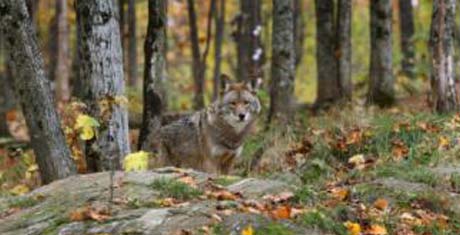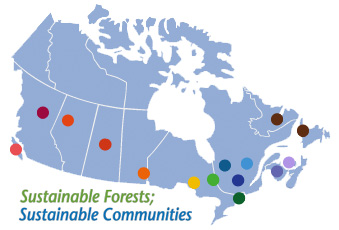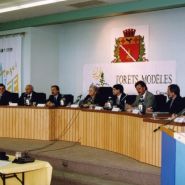Canada is the birthplace of the 'Model Forest Concept'. It began in the early 1990s from a national and global need for wise forest management. This required equal thought to the environmental, social and economic components of the forest. An innovative response was developed, called the 'Canadian Model Forest Program'.
Model Forests were first established throughout Canada. This was initiated by the Canadian Forest Service of the Government of Canada. Model Forests bring together diverse interests and perspectives. They act as a neutral place to facilitate the discussion of issues. Model Forests were also set up as experimental sites. It was a place for new forest practices be to developed and demonstrated. Model Forests work to create a sense of empowerment by engaging Canadians in their own land use decision-making. They are called a 'model' from which others can learn and advance their sustainability goals. In 1992, a competition was held that resulted in the establishment of 10 Model Forests nationally, with an additional Model Forest added in 1997.
Also in 1992, the United Nations Conference on Environment and Development in Rio de Janeiro was held. At this time, the international Model Forest program was announced by Canada's prime minister. He offered an invitation for other countries to join Canada in establishing Model Forests. With its positive response and impacts, today there are over 55 Model Forests in more than 20 countries.
By 2007, Model Forests in Canada had confidence in their work and future. They voted to privatize the 'Canadian Model Forest Network' (CMFN) as a fully functioning, not-for-profit corporation. Also in 2007, restructuring of the Model Forest members took place. There was a shift in governance and name with some Model Forests. Four new members joined the CMFN and one did not continue into this new phase (one Model Forest was dissolved in 2002). The resulting 14 members became CMFN's shareholders. The CMFN also established a Board of Directors for self‐governance.







